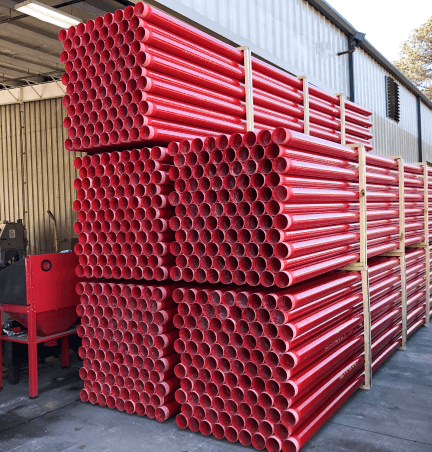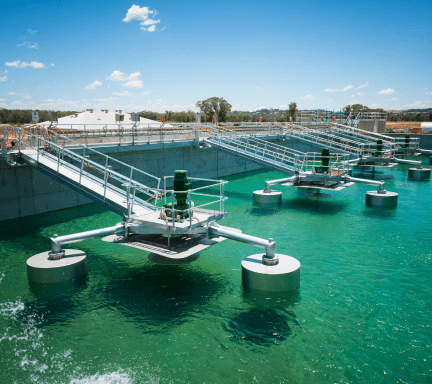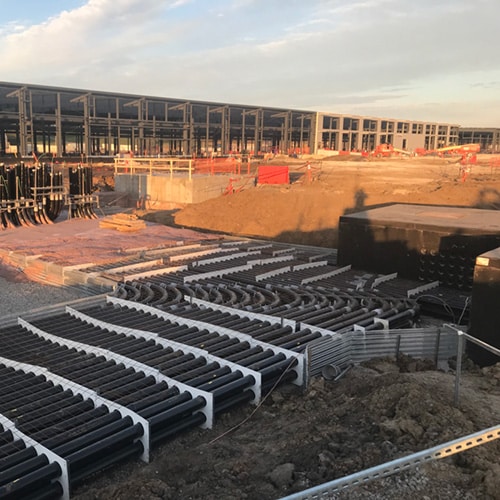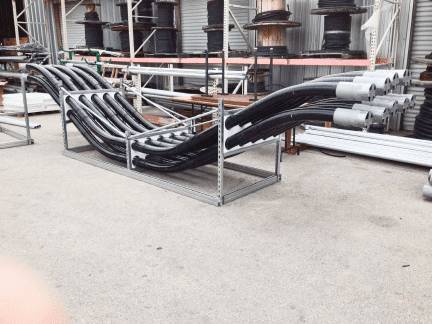Get the full picture on how fiberglass can easily replace PVC across many applications.
Q. In what industries can fiberglass conduit replace PVC conduit?
A. Fiberglass conduit can replace PVC conduit in a variety of applications including commercial, industrial, construction, bridges, tunnels, data centers, utilities, and mining. Its corrosion resistance to many chemicals makes it ideal for wastewater treatment, chemical plants, and port authority/coastal environments. Not only is it lightweight for faster installation, but it is also strong and durable with superior impact resistance.
Q. Is fiberglass conduit in-stock now? What are your order lead times?
A. Order lead times are short. In fact, some of our more popular sizes of elbows ship in 48 hours. They can be used with other conduit types, as well. Contact us for more information about getting conduit to your project site quickly.
Q. Who fares better in terms of installation rates – PVC or fiberglass conduit?
A. The NECA Manual of Labor Rates states that to install a 100-foot length of 6” diameter conduit it takes just 9 hours for fiberglass conduit. For PVC SCH 40, it takes 24 hours. This means fiberglass conduit installs faster, in one-third the time as PVC.
Q. How does fiberglass conduit compare in weight to PVC conduit?
A. One hundred feet of 4” SW fiberglass (RTRC) conduit weighs 72 pounds, significantly lighter than comparable SCH 40 PVC at 231 lbs. Because of its lightweight nature, fiberglass conduit does not add as much weight to supporting structures as other conduit systems.
Q. Can Champion Fiberglass be used with other materials?
A. Fiberglass elbows are frequently provided with PVC couplings to transition to underground PVC conduits. Also, PVC or fiberglass male/female adapters are used to transition to GRC and PVC-coated rigid steel conduit. We only recommend using fiberglass couplings for fiberglass-to-fiberglass connections.
Q. Do fiberglass conduit and PVC conduit release toxic elements when burning?
A. Fiberglass conduit does not release toxic halogens (i.e. chlorine and bromine) when burning, unlike PVC SCH 40, PVC SCH 80, and PVC-coated steel.
Q. Which conduit pulls longer – PVC or fiberglass conduit?
A. Lower cable coefficient of friction (.38 for fiberglass and .90 for PVC) enables longer cable pulls with fiberglass conduit, which means fewer pull boxes are required for long runs, saving material costs. Additionally, fiberglass conduit is compatible with and unaffected by any of the pulling lubricants currently available.
Q. Is burn-through an issue with Champion Fiberglass as it is with PVC?
A. Champion Fiberglass elbows do not burn-through, which means fewer conduit repairs. The conduit is durable and strong with increased longevity.
Q. How are fiberglass conduit, PVC conduit and other conduit types affected by cable fault?
A. Fiberglass conduit will not melt or weld the affected cable to the inside of the conduit under fault conditions as can happen with PVC, steel, and aluminum conduit.
Q. How does Champion Fiberglass conduit perform versus PVC in high heat situations?
A. PVC SCH 40 and PVC SCH 80 withstand +40°F to +150°F range. Flame resistant Champion Fiberglass conduit can withstand a significantly wider temperature range of -60°F to +250°F.
Q. How does fiberglass conduit compare with PVC in lower temperatures?
A. Fiberglass doesn’t get weaker and brittle in freezing temperatures like PVC and HDPE. In fact, it gets slightly stronger in cold temperatures. For more information, check our product comparison chart.
Q. How does Champion Fiberglass conduit compare in price to PVC?
A. Champion Fiberglass conduit is competitively priced in sizes 2” and greater compared to PVC. For more detailed pricing information, we encourage you to reach out to us at 281.655.8900 or by clicking below.












